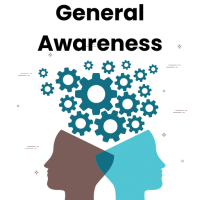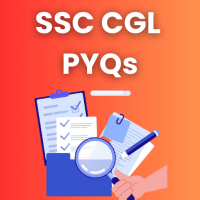SSC CGL Exam > SSC CGL Questions > Choose the correct indirect speech for the di...
Start Learning for Free
Choose the correct indirect speech for the direct sentence: "She said, 'I have met him before.'"
- a)She says that she had met him before.
- b)She said that she had met him before.
- c)She says that she has met him before.
- d)She said that she has met him before.
Correct answer is option 'B'. Can you explain this answer?
Verified Answer
Choose the correct indirect speech for the direct sentence: "She said,...
In transforming the direct sentence into indirect speech, 'have met' changes to 'had met' to represent the past perfect tense. Therefore, the correct indirect speech is "She said that she had met him before."
View all questions of this test
Most Upvoted Answer
Choose the correct indirect speech for the direct sentence: "She said,...
Understanding the Conversion to Indirect Speech
When converting direct speech to indirect speech, specific changes take place, including the pronoun shifts, verb tense adjustments, and the removal of quotation marks. Analyzing the given sentence helps clarify why option 'B' is the correct choice.
Original Direct Speech
- "She said, 'I have met him before.'"
Key Changes in Indirect Speech
- The reporting verb "said" remains in the past tense.
- The present perfect tense "have met" changes to the past perfect tense "had met."
- Pronouns change according to the context (e.g., "I" becomes "she").
Analysis of the Options
- Option A: "She says that she had met him before."
- Incorrect because "says" is present tense; it should align with "said" (past tense).
- Option B: "She said that she had met him before."
- Correct as it maintains the past tense and properly changes "have" to "had."
- Option C: "She says that she has met him before."
- Incorrect; again uses "says" (present tense) instead of "said."
- Option D: "She said that she has met him before."
- Incorrect due to the use of "has" (present perfect) instead of "had" (past perfect).
Conclusion
Option 'B' accurately reflects the necessary changes for converting the direct speech into indirect speech, thus making it the correct answer. It adheres to the rules of tense and pronoun adjustments, ensuring clarity and grammatical accuracy.
When converting direct speech to indirect speech, specific changes take place, including the pronoun shifts, verb tense adjustments, and the removal of quotation marks. Analyzing the given sentence helps clarify why option 'B' is the correct choice.
Original Direct Speech
- "She said, 'I have met him before.'"
Key Changes in Indirect Speech
- The reporting verb "said" remains in the past tense.
- The present perfect tense "have met" changes to the past perfect tense "had met."
- Pronouns change according to the context (e.g., "I" becomes "she").
Analysis of the Options
- Option A: "She says that she had met him before."
- Incorrect because "says" is present tense; it should align with "said" (past tense).
- Option B: "She said that she had met him before."
- Correct as it maintains the past tense and properly changes "have" to "had."
- Option C: "She says that she has met him before."
- Incorrect; again uses "says" (present tense) instead of "said."
- Option D: "She said that she has met him before."
- Incorrect due to the use of "has" (present perfect) instead of "had" (past perfect).
Conclusion
Option 'B' accurately reflects the necessary changes for converting the direct speech into indirect speech, thus making it the correct answer. It adheres to the rules of tense and pronoun adjustments, ensuring clarity and grammatical accuracy.

|
Explore Courses for SSC CGL exam
|

|
Question Description
Choose the correct indirect speech for the direct sentence: "She said, 'I have met him before.'"a)She says that she had met him before.b)She said that she had met him before.c)She says that she has met him before.d)She said that she has met him before.Correct answer is option 'B'. Can you explain this answer? for SSC CGL 2025 is part of SSC CGL preparation. The Question and answers have been prepared according to the SSC CGL exam syllabus. Information about Choose the correct indirect speech for the direct sentence: "She said, 'I have met him before.'"a)She says that she had met him before.b)She said that she had met him before.c)She says that she has met him before.d)She said that she has met him before.Correct answer is option 'B'. Can you explain this answer? covers all topics & solutions for SSC CGL 2025 Exam. Find important definitions, questions, meanings, examples, exercises and tests below for Choose the correct indirect speech for the direct sentence: "She said, 'I have met him before.'"a)She says that she had met him before.b)She said that she had met him before.c)She says that she has met him before.d)She said that she has met him before.Correct answer is option 'B'. Can you explain this answer?.
Choose the correct indirect speech for the direct sentence: "She said, 'I have met him before.'"a)She says that she had met him before.b)She said that she had met him before.c)She says that she has met him before.d)She said that she has met him before.Correct answer is option 'B'. Can you explain this answer? for SSC CGL 2025 is part of SSC CGL preparation. The Question and answers have been prepared according to the SSC CGL exam syllabus. Information about Choose the correct indirect speech for the direct sentence: "She said, 'I have met him before.'"a)She says that she had met him before.b)She said that she had met him before.c)She says that she has met him before.d)She said that she has met him before.Correct answer is option 'B'. Can you explain this answer? covers all topics & solutions for SSC CGL 2025 Exam. Find important definitions, questions, meanings, examples, exercises and tests below for Choose the correct indirect speech for the direct sentence: "She said, 'I have met him before.'"a)She says that she had met him before.b)She said that she had met him before.c)She says that she has met him before.d)She said that she has met him before.Correct answer is option 'B'. Can you explain this answer?.
Solutions for Choose the correct indirect speech for the direct sentence: "She said, 'I have met him before.'"a)She says that she had met him before.b)She said that she had met him before.c)She says that she has met him before.d)She said that she has met him before.Correct answer is option 'B'. Can you explain this answer? in English & in Hindi are available as part of our courses for SSC CGL.
Download more important topics, notes, lectures and mock test series for SSC CGL Exam by signing up for free.
Here you can find the meaning of Choose the correct indirect speech for the direct sentence: "She said, 'I have met him before.'"a)She says that she had met him before.b)She said that she had met him before.c)She says that she has met him before.d)She said that she has met him before.Correct answer is option 'B'. Can you explain this answer? defined & explained in the simplest way possible. Besides giving the explanation of
Choose the correct indirect speech for the direct sentence: "She said, 'I have met him before.'"a)She says that she had met him before.b)She said that she had met him before.c)She says that she has met him before.d)She said that she has met him before.Correct answer is option 'B'. Can you explain this answer?, a detailed solution for Choose the correct indirect speech for the direct sentence: "She said, 'I have met him before.'"a)She says that she had met him before.b)She said that she had met him before.c)She says that she has met him before.d)She said that she has met him before.Correct answer is option 'B'. Can you explain this answer? has been provided alongside types of Choose the correct indirect speech for the direct sentence: "She said, 'I have met him before.'"a)She says that she had met him before.b)She said that she had met him before.c)She says that she has met him before.d)She said that she has met him before.Correct answer is option 'B'. Can you explain this answer? theory, EduRev gives you an
ample number of questions to practice Choose the correct indirect speech for the direct sentence: "She said, 'I have met him before.'"a)She says that she had met him before.b)She said that she had met him before.c)She says that she has met him before.d)She said that she has met him before.Correct answer is option 'B'. Can you explain this answer? tests, examples and also practice SSC CGL tests.

|
Explore Courses for SSC CGL exam
|

|
Signup for Free!
Signup to see your scores go up within 7 days! Learn & Practice with 1000+ FREE Notes, Videos & Tests.























